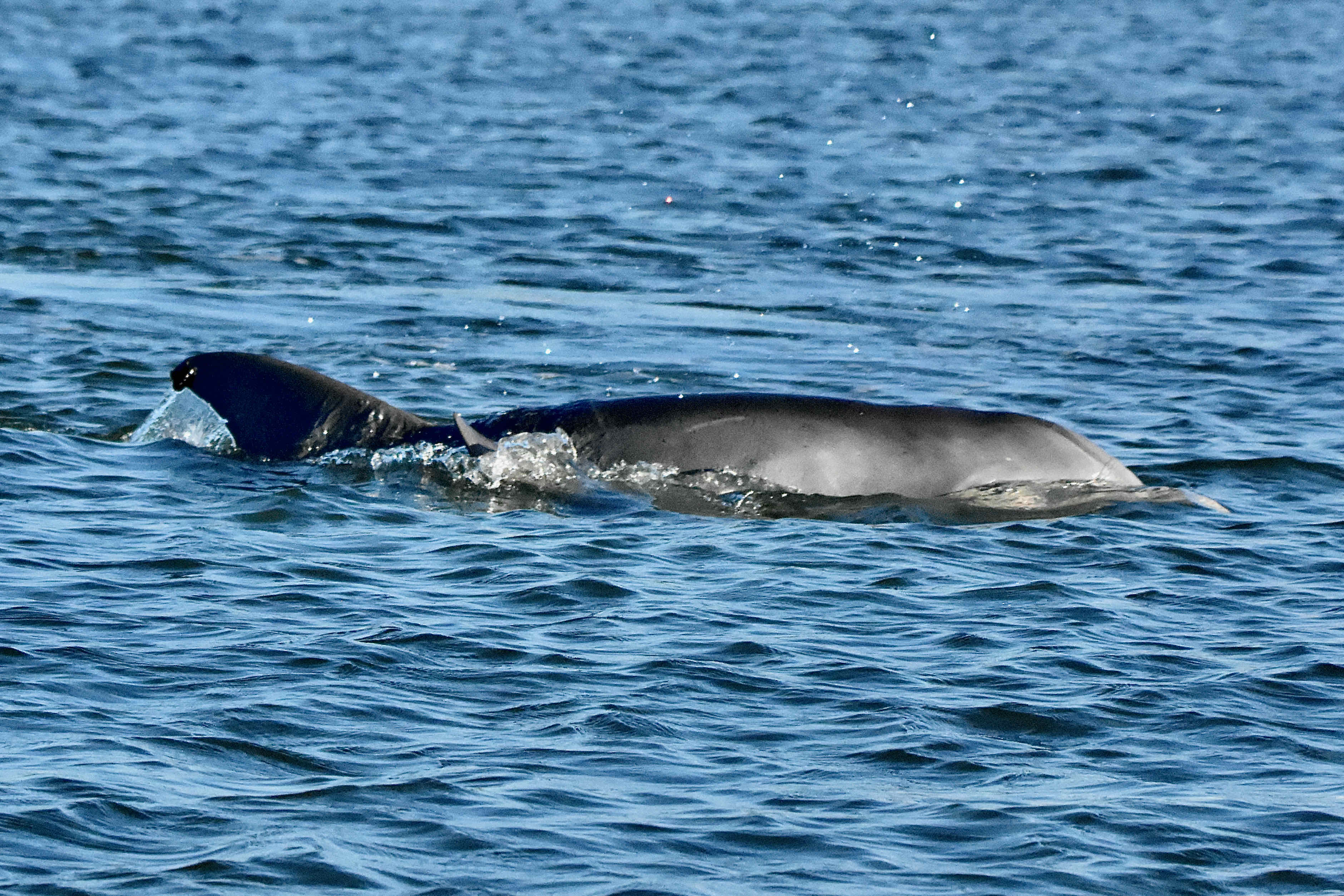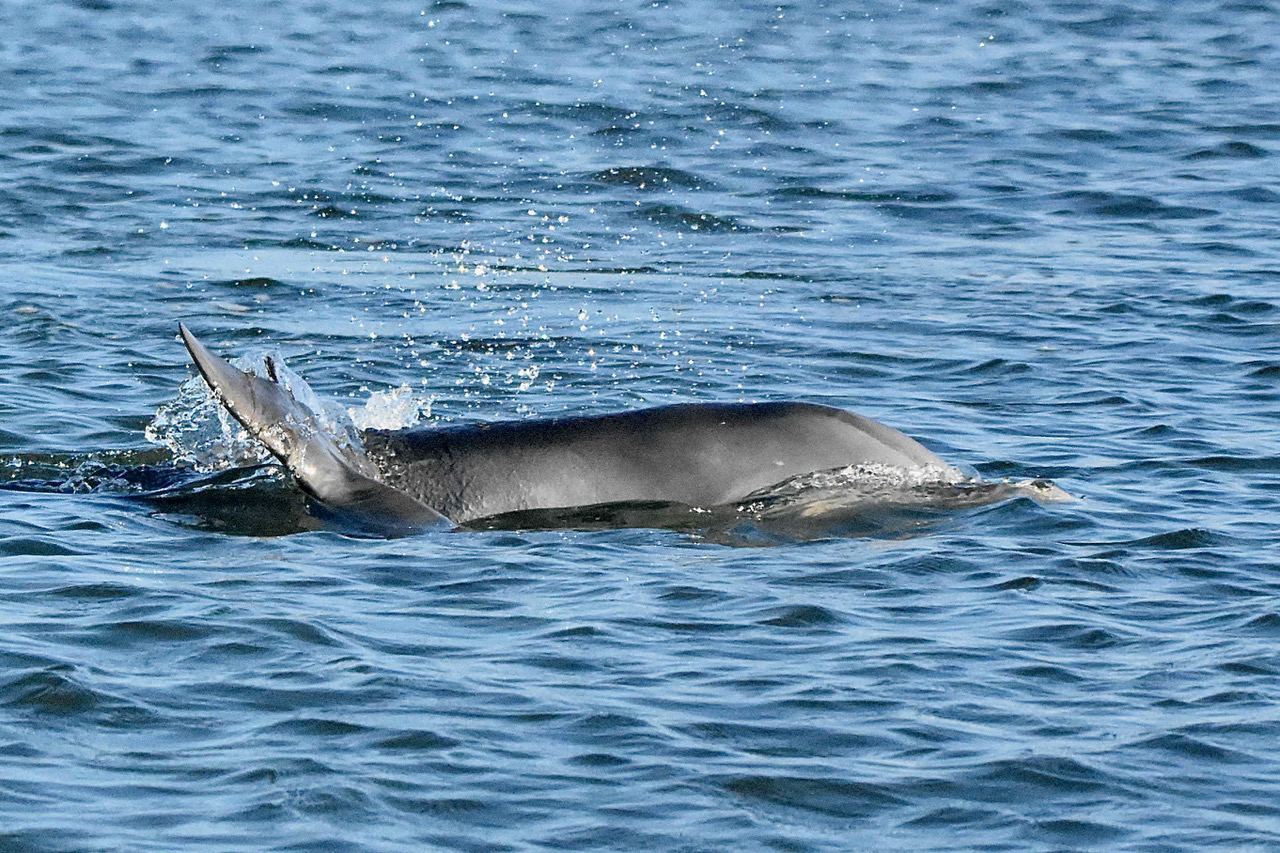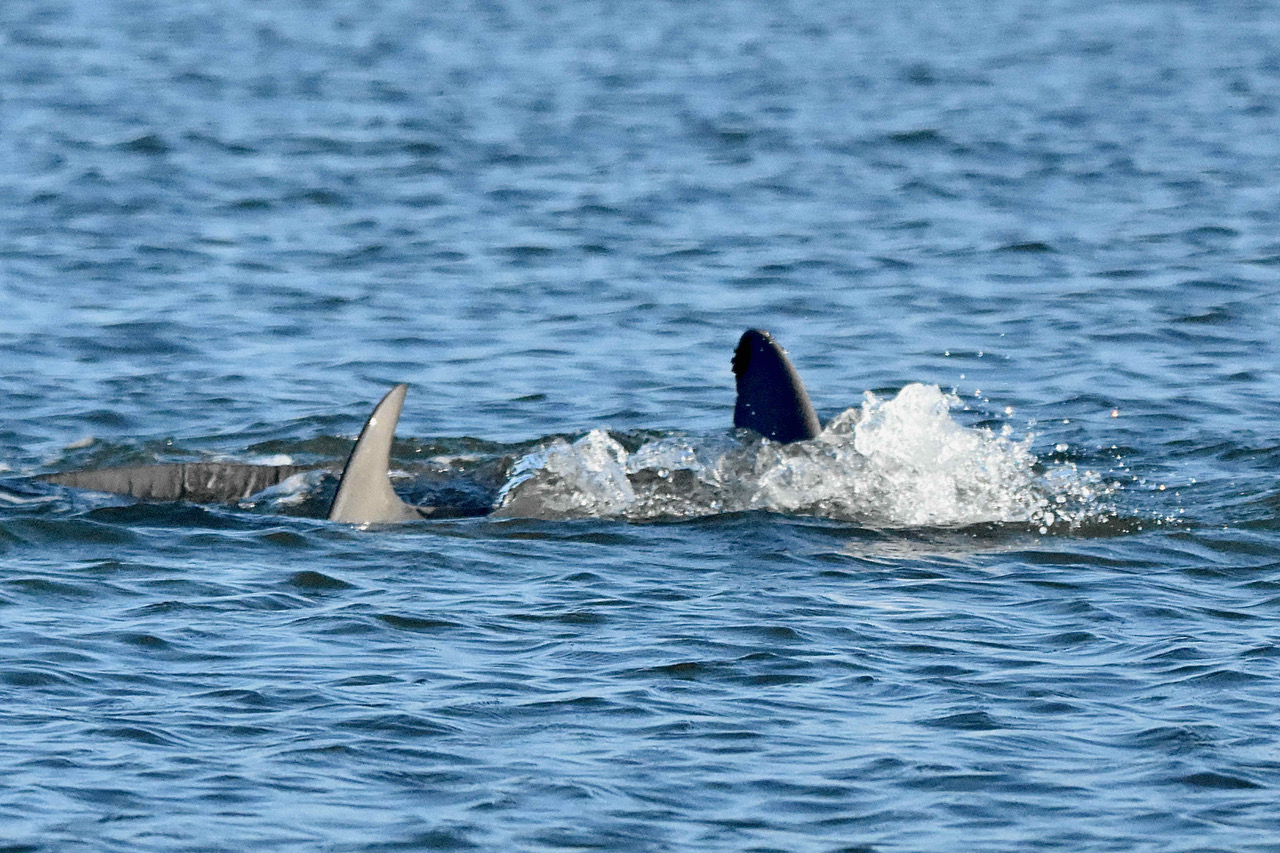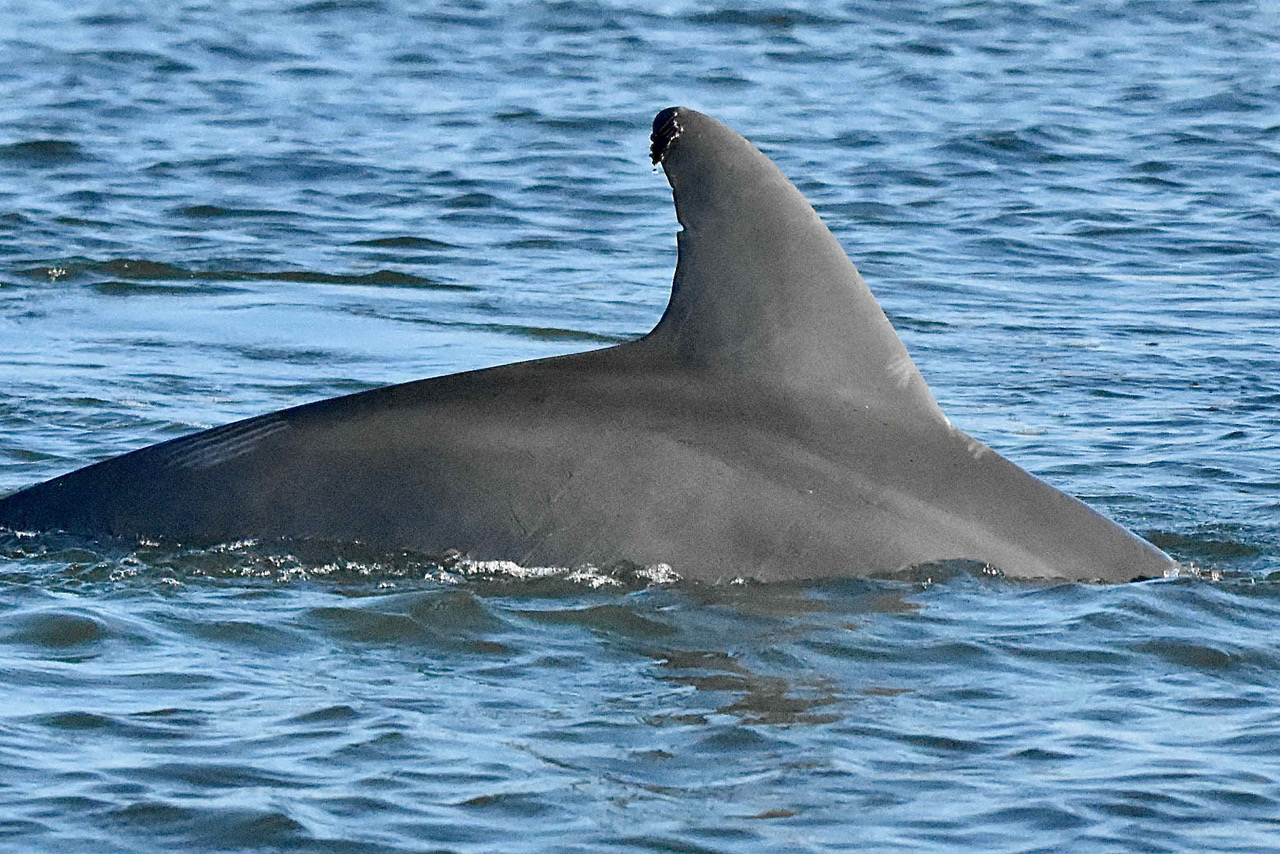
Bottlenose dolphin, photographed in the Matanzas River, St. Augustine, St. John County, in October 2018.
It is one of the most intelligent and charismatic animals on the planet. It’s been the star of movies and television shows and it’s thrilled millions with its incredible acrobatics. Its senses are so sharp that they beat the highest of our high tech tools in performing certain tasks.
And to top it off, it’s Florida’s official saltwater mammal by declaration of the Legislature. Well, maybe that one should be further down on the list.
Of course, we’re talking about the bottlenose dolphin, Tursiops truncatus. It’s one of the most studied of animals and because of that, something of an ethical dilemma.
Bottlenose dolphins are truly a cosmopolian species, found in tropical and warmer waters around the globe. They’re found off both Florida’s Atlantic and Gulf coasts, in near shore waters and farther off shore. They’re found all along the Atlantic coast as far north as Massachusetts.
The bottlenose dolphin population is strong, overall, rating a “least concern” from the International Union for Conservation of Nature, but their number might be depleted in certain areas. They are protected under the Marine Mammal Protection Act.
Some bottlenose dolphin basics:
They are part of a group of mammals called Cetaceans, which includes whales, dolphins and porpoises. It might seem obvious but as mammals, they have lungs and need to surface to breathe. They do so through an opening atop their heads called a blow hole. The blow hole has a muscular flap that closes and allows the animals to stay submerged for as long as four to seven minutes.
Bottlenose dolphins are blue-gray, almost black, on their backs, lighter along their sides, almost white on their bellies, providing them with perfect camouflage. Look at them from above and blend in with the water; look from below, they blend in with the sky.
They are large animals, six to 13 feet in length and weighing as much as 1,400 pounds. They live long lives, between 40 and 60 years. They’re fast, powerful swimmers, capable of hitting 18 mph.
Males become sexually mature at 10 years, females at five to 10 years. Gestation is 12 months. Calves nurse 12 to 18 months and stay with their mothers for three to six years, learning the ways of being a dolphin.
Bottlenose dolphins have 18 to 26 pairs of teeth in each jaw and a short, stubby snout, or rostrum, that is the inspiration for the bottlenose name.
Their menu includes bottom fish like mullet, sheepshead, pinfish and flounder, plus invertebrates such as squid, crabs and shrimp; an individual can consume as much as 20 pounds of food per day. They hunt singly or cooperatively, using clicking sounds, a form of echolocation, to find prey. They communicate with each other through squeeks and whistles.
Bottlenose dolphins live in groups called pods; near-shore pods might number 20 or so; off-shore pods can number in the hundreds. Individuals or groups do break off from the pods for a time, but can reunite.
So now the big question: How intelligent are bottlenose dolphins? The quick answer: Very. They’re so intelligent that some consider them “unhuman humans.”
That might be a bit of an overstatement, but regardless, they’re still pretty gosh darn smart.
Their expected brain-size to body-mass ratio is 5.3, second only to us humans at 7.4. By comparison, a chimpanzee’s is 2.2 and a dog’s is 1.2.
Bottlenose dolphins are self-aware, able to recognize themselves in a mirror.
They are able to use items as tools. Bottlenose dolphins in Australia pull sponges from the sea floor and use them to cover their rostrums (snouts) as they probe the floor for food. It’s a trick they pass on to their offspring.
At the Institute for Marine Mammal studies in Mississippi, the resident bottlenose dolphins were trained to clean any litter that might fall in their tank. For each piece they fetched, they were given a fishy reward. One dolphin named Kelly figured out the game, and kept a piece of litter hidden away. From time to time she would tear off pieces and present it to her handlers for a reward rather than turning in the whole thing, demonstrating a sense of the future and delayed gratification.
Kelly took the game a step further. One day, she fetched a large, dead gull that had fallen into her pool. As a reward, she received much more fish than usual. At feeding time, Kelly would reserve a fish and later use it to lure the birds into her pool. She'd grab one and later give it to handlers for a large reward. Not only that, she taught the trick to her calve, who taught it to other calves. Intelligence.
Bottlenose dolphins form complex societies within their pods. They form relationships, friendships, with other members of the group. Young dolphins must find their place within society, similar to young human beings.
As noted above, they often hunt cooperatively, herding fish, then taking turns to eat by charging through the school. They will assist injured members of the group surface in order to breathe.
All of this raises the ethical question of how we treat these animals, especially those in captivity. Is it ethical to confine such an intelligent animal?
The U.S. halted capturing dolphins for display in places like Seaworld in the 1980s, but it's estimated that 3,000 dolphins are being held.
And speaking of ethical questions, they’ve been used by the military to detect and mark underwater mines and protect waters against unwanted swimmers. They’ve also been used to find lost equipment — their sensory abilities are faster under certain circumstances than our highest of high tech machines. They can even distinguish between types of metals. How they do it, we don’t really know.
Back in the day, bottlenose dolphins were hunted commercially for their meat and oil, which was used to light lamps. Today, not so much. Their biggest threat is getting tangled in commercial fishing equipment.
Our fascination with the bottlenose dolphin is epitomized as the star of movies and television shows, most notably the Flipper series back in the 1960s. Set in Florida, both the movies and the television show featured a extraordinarily intelligent bottlenose dolphin who becomes the friend/pet of the family of a park ranger who helps catch bad guys and rescues those in distress. Think an aquatic version of Lassie.
The show, which ran between 1964 and 1967, primarily used a female bottlenose dolphin named Susie and three “stand-ins” named Patty, Scotty and Squirt. The reason for using females: they’re less aggressive than males, and less marked by scars and disfigurements.
Despite their popularity, bottlenose dolphins have had something of a identity issue. The 1975 legislation making the animal the state’s official saltwater mammal states “the porpoise, commonly known as the dolphin.” No, porpoises are not dolphins. Not even close — different family altogether. Not the Florida Legislature’s finest hour.
Bottlenose dolphins are also known as common bottlenose dolphins. They are the best known member of Delphinidae, the 30-member family of dolphins.
NOTES ON THE PHOTOS BELOW: The first two photos show a female dolphin with a calve, better seen in the middle picture. On the right is a close up of a dorsal fin with a slight cut and some kind of growth at the top. Scientists use these marks to identify individual dolphins.



